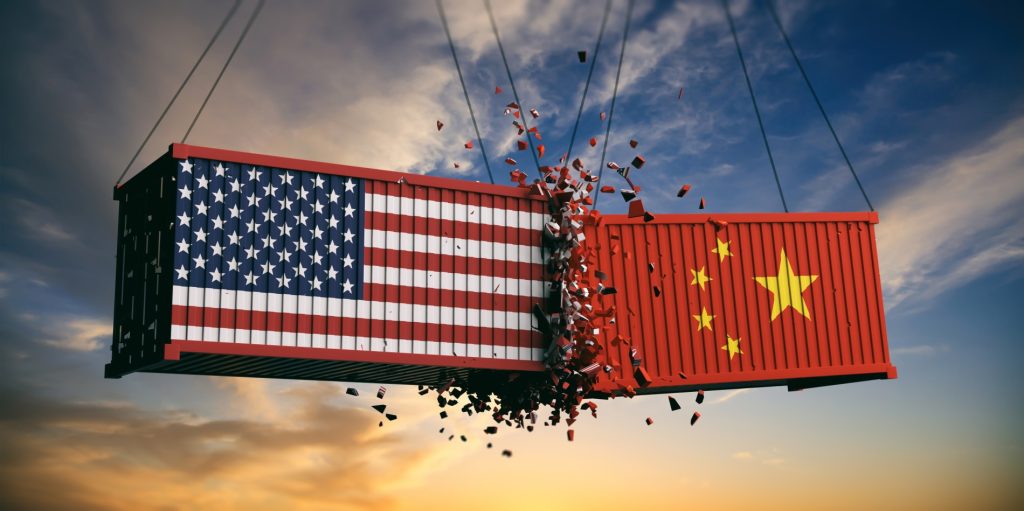
My coffee was still hot when everything changed. Isn’t that how it always goes? The quiet moments before chaos.
“104% tariffs on Chinese imports effective April 10th,” read the alert that sent my phone into a frenzy of notifications. Within minutes, my inbox exploded with panicked messages from clients – DTC brands whose entire business models were built on affordable Chinese manufacturing. One CEO’s text simply read: “We’re screwed. Call me.”
After being in the marketing trenches for over two decades, and having helped brands weather recessions, pandemics, and supply chain nightmares that would make your head spin. But this trade war? It’s a whole different beast. With those unprecedented tariff levels and the added drama of escalating US-Iran tensions, we’re facing a perfect storm that’s keeping me up at night – and I’m guessing you too.
The numbers are just staggering, aren’t they? A 10% baseline tariff on all countries (bad enough), with Chinese goods getting slammed with a punishing 104% rate. Meanwhile, China’s five-year plan is explicitly pushing their domestic DTC brands to go global. Talk about terrible timing – our competitors get government backing just as we face our biggest cost crunch ever.
But here’s what 20 years of marketing battles has taught me: economic chaos doesn’t just test our tactical reflexes – it reveals whether we actually have a strategy worth following.
While most marketing teams are frantically rewriting price lists and slashing promo calendars (I’ve gotten three “emergency strategy session” invites today alone), I found myself returning to something Seth Godin wrote that actually cuts through all the noise: “Strategy is a philosophy of becoming. Who will we become, who will we be of service to, and who will they help others to become.”
I don’t know about you, but that hit me like a ton of bricks. These three simple questions offer us marketers a lifeline amid the tariff madness. Instead of just playing defence against higher costs, we can use this moment to transform our brands, refocus our customer relationships, and build something that actually matters.
In this article, I’m going to show you exactly how to apply this framework to your marketing function – with real examples, practical timelines, and metrics that actually mean something. No theoretical fluff, just battle-tested approaches that have worked for my clients.
The trade war might be unprecedented, but trust me, your response doesn’t have to be a panic attack in PowerPoint form. Let’s dive in.
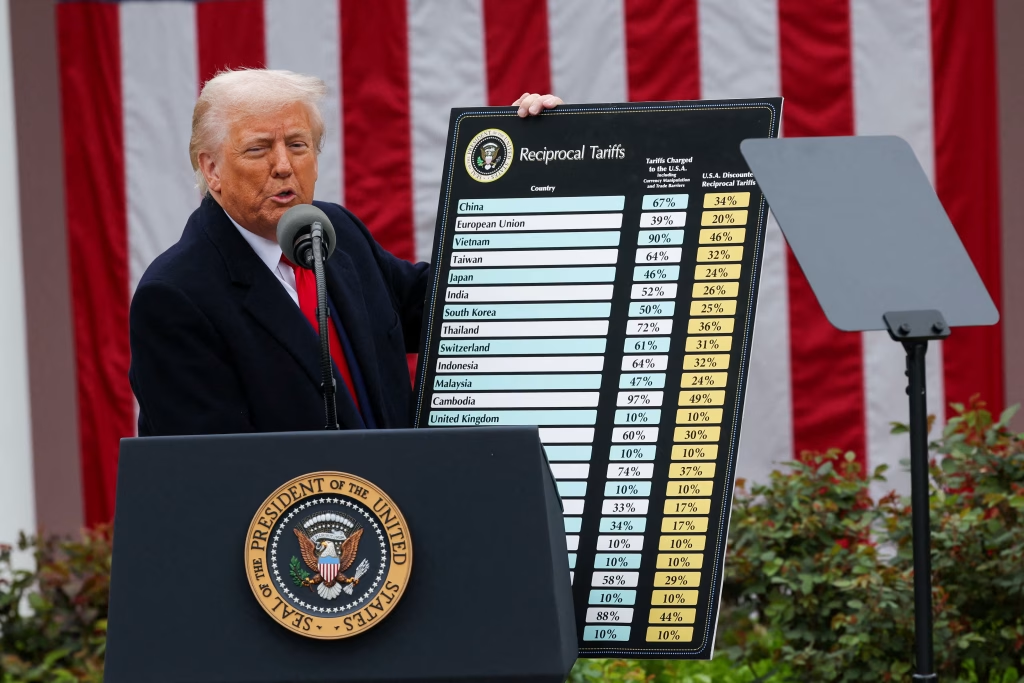
The Strategic Framework for Marketers
Let’s be real – in a world of 104% tariffs, tweaking your marketing tactics alone isn’t going to save your brand. Sure, you can raise prices, switch suppliers, and slash budgets to address the immediate fire, but that won’t position you for success in this completely transformed landscape.
This is where Seth Godin’s framework becomes pure gold for us marketing folks. Let me break down these three seemingly simple questions that have completely changed how I approach crisis marketing:
Who will we become? This first question hits you right in the identity. It’s not just about your logo or tagline – it’s about your brand’s entire reason for being. When costs skyrocket overnight, you can’t just be the same brand with a higher price tag (we’ve all seen how well that works, right?). Your marketing needs to tell a compelling story about why you still matter, maybe even more than before.
Who will we be of service to? Here’s the truth that nobody wants to admit: economic chaos affects different customer segments in wildly different ways. Some folks won’t even notice your price increases, while others will abandon ship immediately. This question forces you to get brutally honest about which customers you can actually serve well when resources are tight. It’s about focus, not volume.
Who will they help others become? This last question is my favorite because almost everyone misses it. It looks at how your customers use your products to maintain their own relationships and promises. Understanding this dimension lets you create messaging that transcends price sensitivity entirely. (I’ve seen this approach work miracles during previous crises.)
Together, these questions create a powerful framework that shifts you from playing defense to actually creating new value. While your competitors are busy crafting apologetic emails about price increases, you’ll be telling a much more compelling story about evolution and purpose.
I’ve used this approach with dozens of marketing teams across industries (from beauty brands to SaaS companies – it works everywhere!), and I’ve found it works best when you tackle the questions in sequence, letting each answer inform the next. Let’s explore how to apply each dimension to your marketing function, starting with the fundamental identity question.
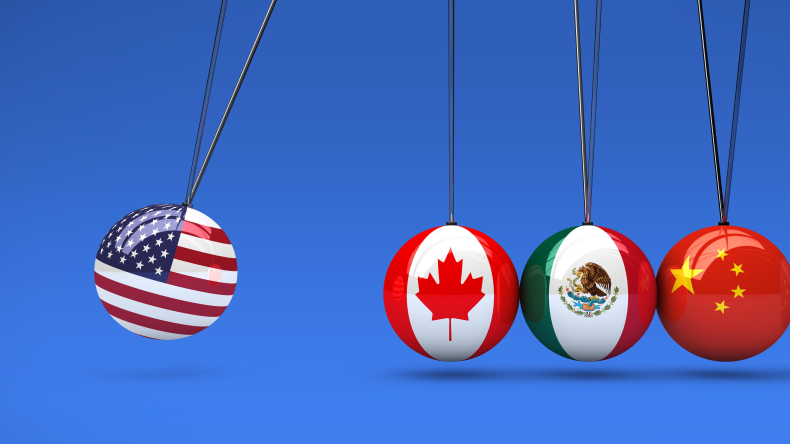
Reimagining Brand Identity in Crisis
Those 104% tariffs on Chinese imports don’t just mess with your cost structure – they’re a direct attack on your brand’s very identity. This is especially brutal for DTC brands whose whole promise has been “premium quality without the markup” through efficient Chinese manufacturing.
I recently worked with a kitchen essentials brand facing this exact nightmare scenario. The CEO called me in a panic, ready to simply raise prices and pray. Instead, we took a step back and asked a more fundamental question: “Who do we need to become to stay relevant when our cost advantage evaporates overnight?”
We dove into their customer research and discovered something fascinating – their most loyal customers weren’t primarily buying on price at all. They valued the brand’s distinctive design aesthetic and absolutely loved their educational content. This insight was a game-changer! Instead of positioning as an accessible luxury brand, we pivoted to become a cooking education platform that happens to sell beautifully designed tools.
This identity shift rippled through every aspect of their marketing:
Brand Messaging: We ditched the “affordable premium” angle and went all-in on culinary skill development and cooking confidence. (Their new tagline? “Cook like you mean it.”)
Content Strategy: We doubled down on recipe development, technique videos, and cooking classes – the stuff their audience couldn’t get enough of.
Visual Identity: We completely flipped the script from product-centered imagery to people-centered cooking moments that triggered emotional connections.
Influencer Strategy: We dropped most of their lifestyle influencers (who were mostly about aesthetics) and partnered with cooking educators and chefs who could actually teach.
The results? Mind-blowing. Despite a 22% price increase (which would have been marketing suicide under their old identity), their conversion rate only dropped by 3%. Even better, their customer lifetime value jumped by 18% as people engaged more deeply with their educational ecosystem.
This approach becomes even more critical when you’re up against Chinese DTC brands expanding globally with their government’s backing. These competitors will maintain manufacturing advantages despite the reciprocal tariffs. Your marketing has to differentiate on dimensions beyond price – think purpose, community, and transformation.
As you navigate this identity evolution, here are the key metrics you should obsess over:
- Brand perception shifts across key attributes (we track these monthly now)
- Content engagement rates by topic and format (what’s actually resonating?)
- Customer acquisition cost by messaging approach (which story works best?)
- Retention rates following price adjustments (who’s sticking around?)
- Share of voice on non-price attributes (are you owning the conversation?)
The marketing tools I’ve found most valuable during this transition include sentiment analysis (to catch shifts in perception), A/B testing platforms for messaging variants (test everything!), and community engagement metrics. These help you measure not just how customers respond to price changes, but how they’re connecting with your evolving brand story.
Remember: Your brand identity will change in response to these 104% tariffs whether you plan for it or not. The only question is whether that change will be strategic or accidental. Marketing leaders who proactively define “who we will become” create brands that don’t just survive economic disruptions – they emerge stronger and more focused on the other side.
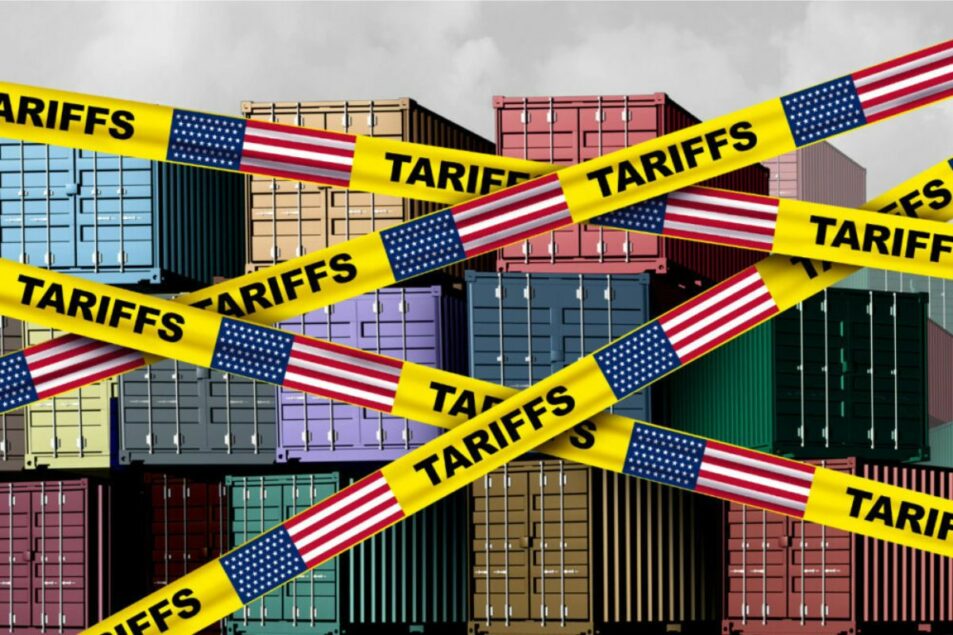
Customer Segmentation When Everything Changes
When tariffs force you to raise prices, your first instinct is probably to panic about losing customers across the board. I get it – I’ve had that same cold sweat moment with clients. But here’s what two decades of guiding brands through economic chaos has taught me: customer responses vary dramatically by segment. Your job as a marketer isn’t to keep everyone happy (impossible) – it’s to identify which customers you can serve meaningfully in this new reality.
Let me share a real example. During the pandemic, I worked with a beauty brand facing similar cost pressures. We did a deep dive into their customer data and discovered something that completely changed our approach: their subscription customers over 45 were barely affected by the economic uncertainty, while their younger single-purchase customers became dramatically more price-sensitive overnight.
This insight transformed their entire marketing strategy:
Digital Ad Spend: We shifted 60% of their acquisition budget toward the 45+ demographic. (Their media buyer thought we were crazy until the results came in.)
Email Marketing: We created completely separate content streams with different messaging for each segment. The younger audience got more value-focused content, while the 45+ segment received more emotional and aspirational messaging.
Loyalty Program: We enhanced benefits specifically designed for their resilient customer segment, focusing on exclusivity and recognition rather than discounts.
Product Development: We fast-tracked launches that appealed to their most stable customer base, even delaying products targeted at more price-sensitive segments.
The payoff was dramatic. While their competitors saw 15-20% revenue declines, this brand maintained flat sales by focusing intensely on the customers they could serve best. In a crisis, flat is the new up!
With the current trade war, this segmentation becomes even more critical. The multi-front nature of today’s challenges – China tariffs, Iran tensions, and competitive pressure from Chinese DTC brands – creates a complex economic environment where consumer confidence varies wildly across different customer groups.
To identify your most resilient segments, dig into these data points:
- Purchase behavior during previous economic disruptions (past behavior predicts future responses)
- Retention rates across different customer cohorts (who sticks around when things get tough?)
- Price sensitivity by acquisition channel (some channels attract bargain hunters)
- Engagement with non-promotional content (who values you beyond discounts?)
- Customer lifetime value by segment (who’s worth investing in for the long haul?)
Digital marketing gives us powerful tools for executing this segmented approach. Platforms like Facebook Business Manager, Google Analytics 4, and customer data platforms (CDPs) now let you create sophisticated audience targeting based on these behavioral indicators. Your content strategy should adapt too, creating distinct messaging tracks that speak to the specific concerns and motivations of your priority segments.
I’ve seen so many brands make the same panic-driven mistake: slashing prices across the board to maintain volume. One apparel client made this error early in the pandemic, and while sales temporarily spiked, they attracted discount-hunters who disappeared the minute promotions ended. Meanwhile, they confused their core customers who valued the brand for more than price. It took us nearly a year to rebuild their premium positioning.
The marketing KPIs that matter most during this transition include:
- Conversion rate by customer segment (who’s still buying?)
- Customer acquisition cost by segment (is your targeting efficient?)
- Retention rate by acquisition channel (which channels bring loyal customers?)
- Content engagement by topic and segment (what resonates with whom?)
- Revenue per customer by cohort (who’s spending despite uncertainty?)
The question isn’t how to serve all customers despite tariffs – it’s who you’ll choose to serve exceptionally well when you can’t be everything to everyone. This clarity of service is what separates brands that merely survive economic disruptions from those that emerge stronger and ready to capitalize on the recovery.
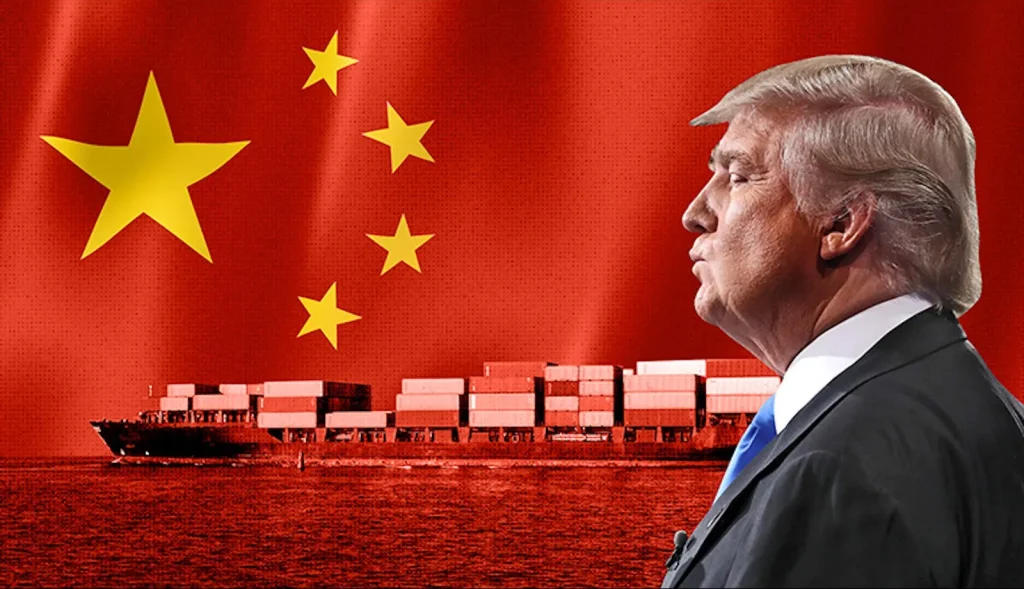
Enabling Customer Value Networks
Here’s the most overlooked dimension of marketing strategy during economic chaos: understanding how your customers use your products to maintain their own important relationships and promises. This perspective becomes pure gold when tariffs force difficult purchasing decisions.
Let me share an insight from behavioral economics that changed how I approach crisis marketing: when economic uncertainty rises, consumers don’t just evaluate products based on personal utility – they prioritize items that help them fulfill social and emotional obligations to others. (Think about what you’d cut from your budget last versus first.)
I saw this principle work magic with a home goods client during the pandemic. Their initial marketing was all about product quality and design – beautiful stuff, but focused entirely on the product itself. Through customer interviews, we discovered something that completely changed our approach: customers weren’t just buying furniture; they were creating spaces where family connections could thrive during isolation.
This insight led to a marketing transformation:
Campaign Theme: We ditched “Beautiful Spaces” (yawn) and launched “Meaningful Moments” – a campaign about the experiences their products enabled, not just how they looked.
Social Strategy: We created platforms where customers could share how products enhanced their family experiences. The user-generated content was more powerful than anything our creative team could have developed.
Content Marketing: We developed guides for using products to create connection rituals – like dining table arrangements that encouraged conversation or reading nooks that brought parents and kids together.
Email Program: We featured customer stories about meaningful interactions in their spaces, creating an emotional connection that transcended product features.
The results defied all economic logic. Despite raising prices 15% to cover supply chain costs, their conversion rate improved by 23%. Why? Because they weren’t just selling products – they were enabling customers to maintain essential relationships during crisis.
With today’s 104% tariffs creating similar pressure on consumer spending, this approach offers a powerful alternative to competing on price. Your marketing can focus on how your products help customers fulfill their own promises and values, even in challenging times.
Community-building becomes a critical marketing function in this approach. The home goods brand created digital spaces where customers shared ideas, experiences, and encouragement. This community became a value multiplier that competitors couldn’t easily replicate, creating resilience against price sensitivity that purely product-focused brands couldn’t match.
The social media and content strategies that best support this approach include:
- User-generated content featuring customer-to-customer connections (more authentic than your polished brand content)
- Community challenges that encourage shared experiences (we saw 3x engagement with these)
- Educational content that enhances product utility for relationship building (how-to guides that focus on emotional outcomes)
- Storytelling that highlights emotional outcomes rather than product features (people remember stories, not specs)
To measure the effectiveness of this approach, track these metrics:
- Community engagement rates (are people actually participating?)
- User-generated content volume and quality (are customers becoming advocates?)
- Sharing behavior among customers (is your content spreading organically?)
- Sentiment analysis of customer conversations (what emotions are you triggering?)
- Referral rates from existing customers (are they bringing their friends?)
The question isn’t just how your products serve your customers – it’s how your marketing helps customers understand how your products enable them to serve others. When you build marketing around this deeper value dimension, price sensitivity diminishes as customers recognize the true worth of what you provide beyond the physical product itself.
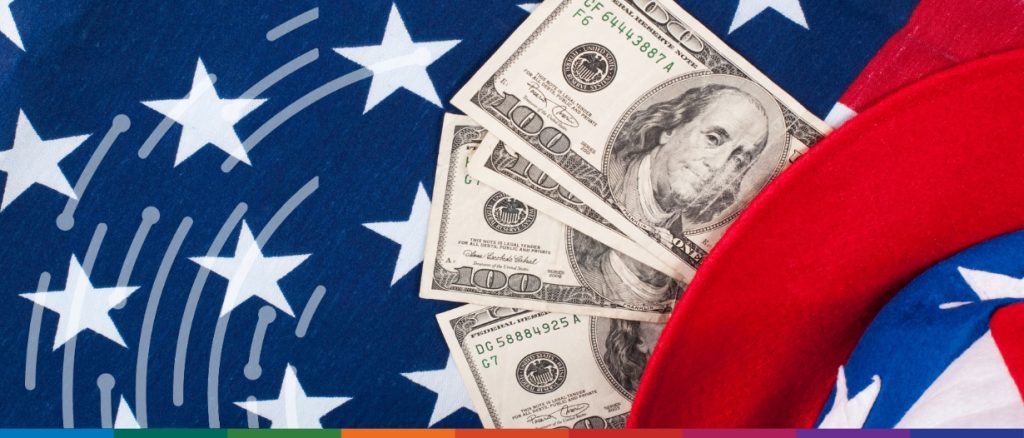
The 90-Day Marketing Transformation Plan
Let’s get practical. The trade war’s impact isn’t some distant threat – it’s here, and it’s hitting hard. With April 10th’s implementation of 104% tariffs just around the corner, you need a structured approach to transformation, not just random tactics. Based on my experience guiding brands through similar disruptions, here’s a 90-day marketing transformation plan you can actually implement:
Week 1: Brand Identity Assessment and Communication
- Day 1-2: Conduct emergency brand perception audit with key customer segments (yes, you can do this in two days if you’re focused)
- Day 3: Assemble cross-functional team to define evolved brand positioning (get sales, product, and customer service in the room)
- Day 4-5: Develop messaging framework for communicating identity evolution (keep it simple and actionable)
- Day 6-7: Create stakeholder-specific communication plans (customers, team, partners all need different approaches)
Key Marketing Deliverables: Brand evolution narrative (your new story), messaging guide (how to tell it), communication timeline (when to share it)
Weeks 2-4: Customer Segmentation and Value Proposition Testing
- Week 2: Analyze customer data to identify most resilient segments (look for patterns in past behavior)
- Week 3: Develop segment-specific value propositions and messaging (one size definitely does not fit all)
- Week 4: Launch rapid testing of messaging variants across channels (test, learn, iterate – repeat daily)
Key Marketing Tactics: Segmentation analysis (who matters most?), A/B testing framework (what resonates?), channel-specific messaging (where do they engage?)
Months 2-3: Building and Measuring Customer Transformation Networks
- Weeks 5-6: Develop community-building content strategy (focus on connection, not just consumption)
- Weeks 7-8: Launch customer story platform and sharing mechanisms (make it easy for customers to become content creators)
- Weeks 9-12: Implement measurement framework for network effects (track how value multiplies through community)
Key Marketing Metrics: Community engagement rate (are people participating?), user-generated content volume (are they creating?), referral attribution (are they sharing?)
For resource allocation, I recommend this distribution during the transformation period:
- 30% to brand identity evolution and communication (your foundation)
- 40% to customer segmentation and targeted acquisition (your focus)
- 30% to community building and network effects (your multiplier)
This represents a significant shift from traditional marketing budgets, which typically allocate more heavily toward acquisition. During trade war disruption, retention and community become relatively more valuable as acquisition costs rise across the industry. (I’ve seen CAC increase by 30-40% during similar disruptions.)
The implementation timeline should follow this sequence because each phase builds on insights from the previous one. Your brand identity evolution informs which customers you’ll focus on, which in turn shapes how you’ll build community among those customers. Skip steps at your peril – I’ve seen brands try to jump straight to community building without clarity on identity, and it falls flat every time.
Expected outcomes at each stage include:
- Weeks 1-4: Clarity on evolved positioning and priority segments (the “who” questions answered)
- Weeks 5-8: Initial validation of messaging effectiveness with core audiences (the “what” questions answered)
- Weeks 9-12: Measurable community engagement and early network effects (the “how” questions answered)
This 90-day approach doesn’t just address the immediate tariff challenge – it builds marketing capabilities that create long-term competitive advantage regardless of how the trade war evolves. The brands that implement this structured transformation will find themselves not just surviving the current crisis, but positioned to thrive in the new competitive landscape that emerges.

The Marketer’s Opportunity
Let’s be honest – this trade war isn’t just another economic hiccup we need to weather. It’s a defining moment for us as marketing leaders. Those 104% tariffs hitting on April 10th? They’re going to separate the strategic thinkers from the tactical responders.
Throughout my 20+ years in marketing (yes, I’ve got the battle scars to prove it), I’ve noticed something fascinating: the brands that thrive through disruption aren’t the ones with the biggest budgets or the most favorable cost structures. They’re the ones led by marketers who can see beyond the immediate fire to spot opportunities in the smoke.
Seth Godin’s framework – focusing on who we become, who we serve, and who our customers help others become – gives us a powerful alternative to the knee-jerk, discount-driven approaches most brands will default to. I’ve seen this play out repeatedly across economic cycles. While everyone else is crafting apologetic emails about price increases, you could be telling a much more compelling story about evolution and purpose.
The choice facing you right now is pretty clear: Will you spend the next quarter explaining price hikes and managing decline? Or will you lead a transformation that redefines your brand’s identity, deepens relationships with your most valuable customers, and builds community that transcends economic uncertainty?
I know which path I’m taking. Next Monday, I’m gathering my team for a full-day workshop to reimagine our marketing approach using the framework and 90-day plan I’ve outlined here. No PowerPoints allowed – just honest conversation about who we’re becoming and who we’re serving. (If you’re curious about how it goes, drop me a message – I’m happy to share the outcomes.)
Here’s my challenge to you: Which dimension of this framework – identity, service, or customer transformation – presents the greatest opportunity for your brand during this trade war? Share your thoughts in the comments. I promise I’ll personally respond to as many as I can, and I’m always up for deeper conversations about applying these principles to your specific marketing challenges.
The tariffs may be inevitable, but how we respond as marketers? That’s entirely our choice. Let’s choose transformation over panic, strategy over tactics, and purpose over price wars.
Who’s with me?
Eric is a marketing strategist with over 20 years of experience helping brands navigate economic disruptions. He specialises in brand marketing, content strategy, and strategic planning for direct-to-consumer brands. Connect with him on LinkedIn to continue the conversation about marketing transformation during the trade war.

